These landlocked mini-salmon are delicious and fun to catch at Detroit Lake in Oregon
At Detroit Reservoir in late April, more than 70 boats cruised circles around the lake in pursuit of a fish — salmon. But chances are good it's not the type of salmon most Oregonians would imagine.
As the decline of sea-run salmon continues across the Northwest, some Oregon anglers have turned their focus to kokanee, a bite-sized, non-seafaring sockeye salmon. Since the state began stocking them, the fish has grown in popularity, spurring a new community of passionate anglers, colloquially called "kokaholics" or "Koke Heads."
“With the salmon fisheries getting so messed up, people are switching to kokanee, because it’s basically a sockeye salmon, and now you can go up the lakes and catch these nice little salmon,” said Brad Halleck, treasurer of Kokanee Power of Oregon, a nonprofit that works with state agencies to protect, boost and manage kokanee populations at lakes and reservoirs around the state.
Born from ice
The species’ origin remains uncertain, but it’s believed their divergence from sea-run sockeye salmon occurred when glacial melt created freshwater lakes across what is now the northern United States and Canada. When the lakes were created, some salmon went to the ocean, while others stayed in the freshwater, creating two separate evolutionary paths.
“When the ice age retreated, sockeye salmon were separated, and it created a freshwater, landlocked species of these fish,” said Henry Hughes, a kokanee angler, fishing writer and professor at Western Oregon University.

Kokanee, like other salmonids, travel up rivers to spawn. While chinook salmon travel from the ocean up through coastal river systems to reproduce, kokanee go from lakes and reservoirs into tributaries and surrounding rivers to spawn.
"The lake or reservoir is their ocean," Hughes said.
Elise Kelly, fish biologist for the Oregon Department of Fish and Wildlife, said the kokanee spawning season varies based on the location of the population. For example, northern kokanee, like those in western Canada, tend to swim up rivers and creeks to spawn in September, while stocks further south like those in Oregon will do so in October.
When spawning, the fish change in color and appearance – switching out their bright silver color and pointed snout for a deep red body color, dark green head, a hooked nose and a humpback.
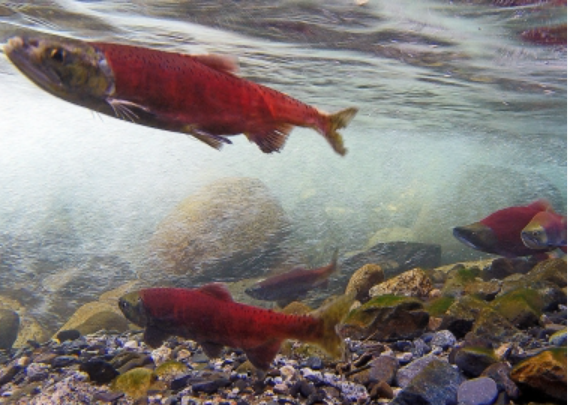
Indeed, the name sockeye originates from the word suk-kegh from the native British Columbia coast Salish language, which means "red fish." The name kokanee came from the Sinixt Okanagan word, kekeni, which was used to describe the landlocked lake salmon.
Kokanee are native in some Oregon lakes, including Suttle Lake in the Cascade Range and Wallowa Lake in the northeast corner of the state. They’ve been stocked in several freshwater bodies and have developed a stronghold in many lakes near the valley, including Salem’s favorite summer recreation hotspot: Detroit Lake.
"They flourish in reservoirs," Hughes said. "There's a lot of controversy about damming rivers and I agree with that, it's a big problem for salmon and steelhead, but it creates a great freshwater fishery for a lot of people."
Kokanee in Detroit Lake
The rise of kokanee in lakes around the state directly correlates with the decline of salmon in rivers. Detroit Lake, which was first stocked with kokanee in 1959, is a testament to this.
“It was seen as potentially offering a nice fishery above the dam at that time,” Kelly said. “Maybe most particularly because of course there was no longer a winter steelhead fishery or a chinook fishery above dam, and so this would offer a salmonid species for folks to be able to fish for.”
Since their introduction, Detroit has continually hosted a healthy population. The lake is suitable for kokanee for numerous reasons.
“Part of it is that they don’t compete very much with native species, they’re not a predator, but they offer a nice opportunity to kind of fill this middle niche between being a predator and only being prey,” Kelly said.
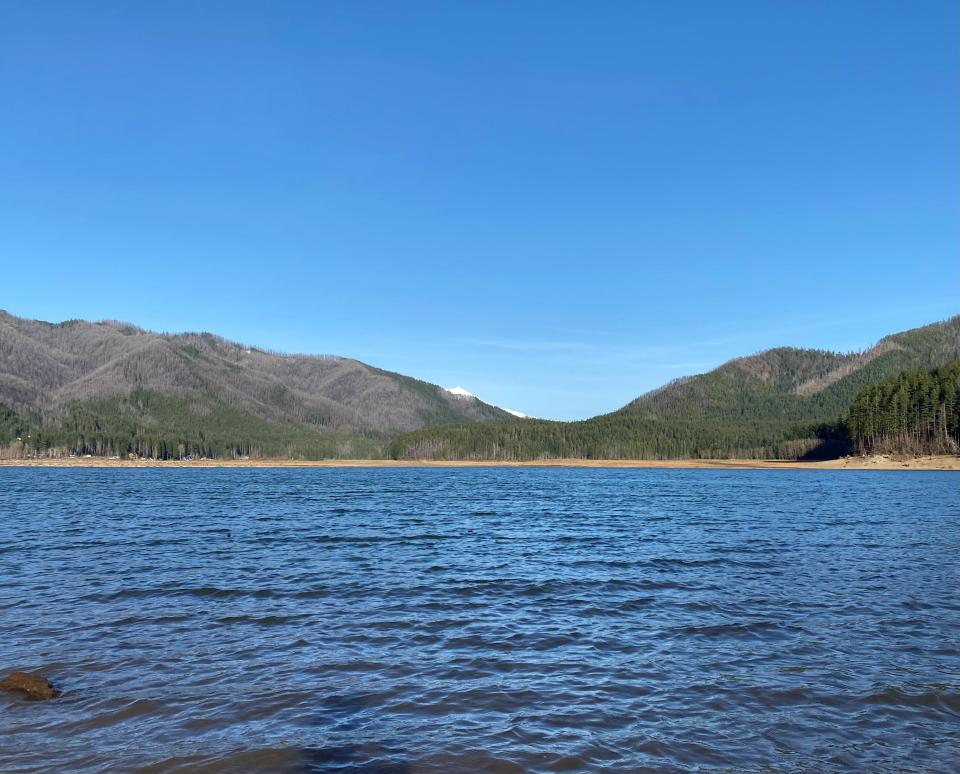
Kokanee feed on zooplankton, which are microscopic aquatic organisms that drift in lakes, rivers and saltwater environments. Detroit is chock-full of them.
While the lake is stocked yearly, there is natural reproduction of the species in Detroit as well. The lake’s location at the intersection of the Santiam and Breitenbush rivers, with access to Blowout, Tumble and several other creeks, creates prime real estate for naturally reproducing fish.
“As long as kokanee can go from the reservoir into tributaries to spawn, then the natural production is pretty good,” Kelly said.
ODFW and Kokanee Power of Oregon collaborate on population and catch monitoring projects. Kelly said according to the results of their work, the natural production at the lake accounts for 50 to 70% of the catch taken from the reservoir.
Small changes go a long way with kokanee numbers at Detroit
The kokanee stocking program at Detroit hasn’t gone without challenges. In previous years, predation from rainbow trout was a major issue.
“Fish and Wildlife was stocking the lake with ¾-inch kokanee at the same time that they were throwing in 16-inch trout, so they ended up just feeding the trout,” Halleck said. “So what we did about seven or eight years ago was we paid to raise the kokanee to about 6 or 7 inches and stock them at a later date so that they would have a higher survival rate.”
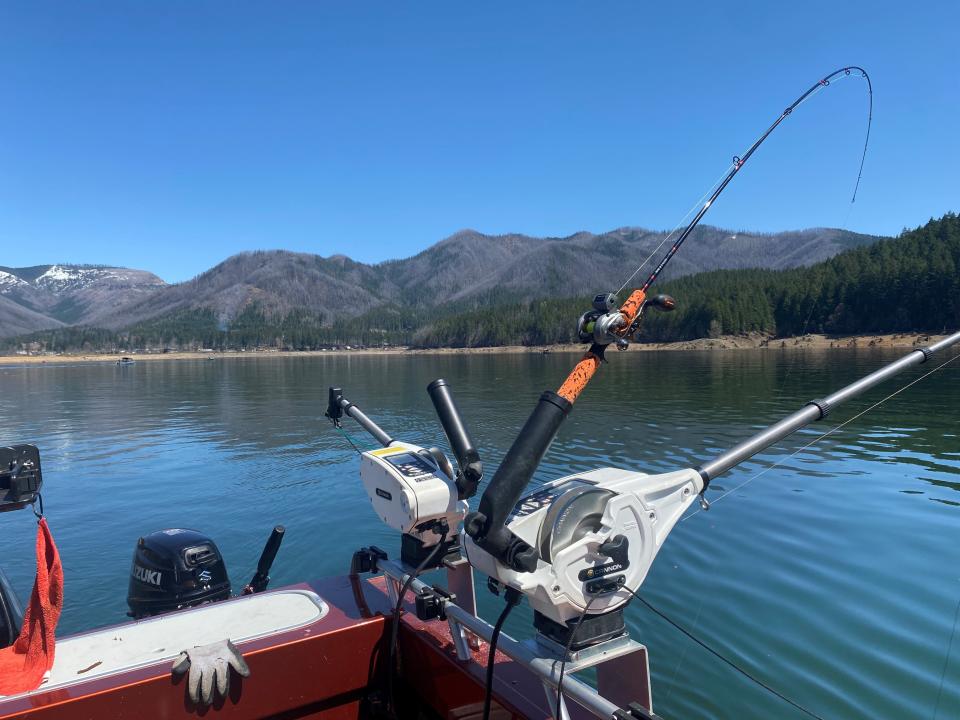
Delaying the kokanee stocks and allowing the fish to grow larger in the hatchery before planting has helped build a successful fishery.
And the population continues to thrive.
The bag limit on kokanee in Detroit is 10 per day – a number experts often hit.
Gear, gear and more gear: How to fish for kokanee
The two most common techniques for kokanee fishing are jigging and trolling, and each has its own season.
“This time in the year, in the spring, they tend to school up,” Halleck said. “So we’ll go out with jigs and vertically jig them from above.”
Jigging usually means using a weighted fishing lure, which you typically jerk and move up and down to get the attention of the fish you are targeting. It's best done from a boat, and a fish finder is helpful so that you can see where the fish are, get above them and jig vertically.
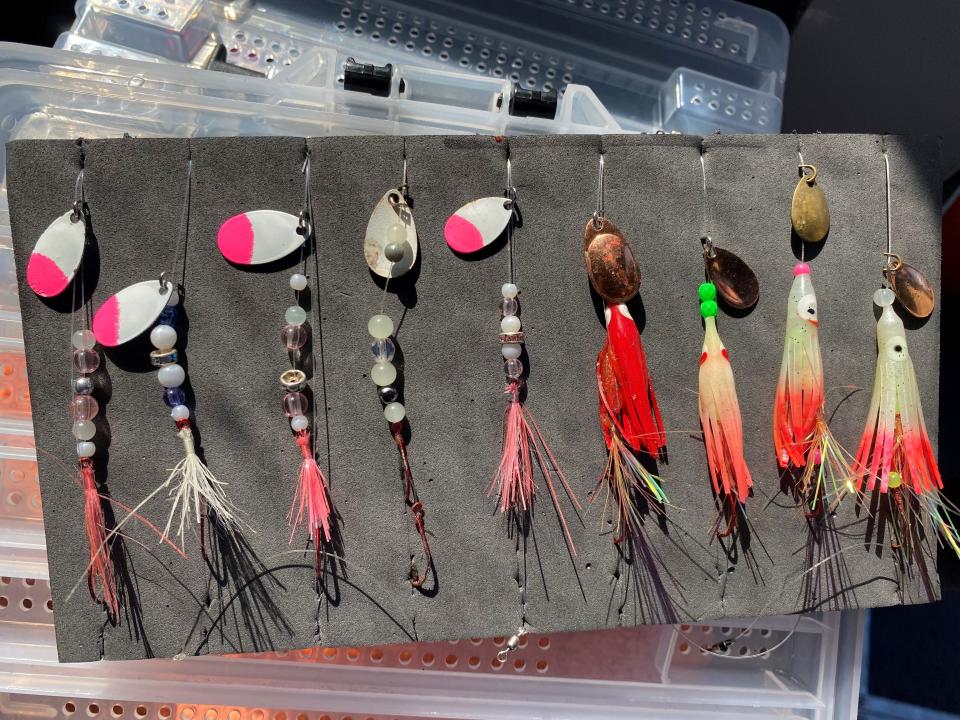
When the fishing season hits mid-summer and temperatures rise, fish disperse from their schools and trolling becomes the name of the game.
A kokanee trolling rig consists of a dodger and a lure. Dodgers are reflective, metallic attractors that bring fish toward your line while also imparting action on the lure. Kokanee aren’t predators, but they are extremely territorial and will attack a lure if it’s in their way and catches their attention.
Dodgers are usually brightly colored, or have a UV sticker on them, which is especially important for fishing at depths. Past 20 feet, certain colors fade and you will need to rely on the dodger to provide a flashy attractant near your lure.
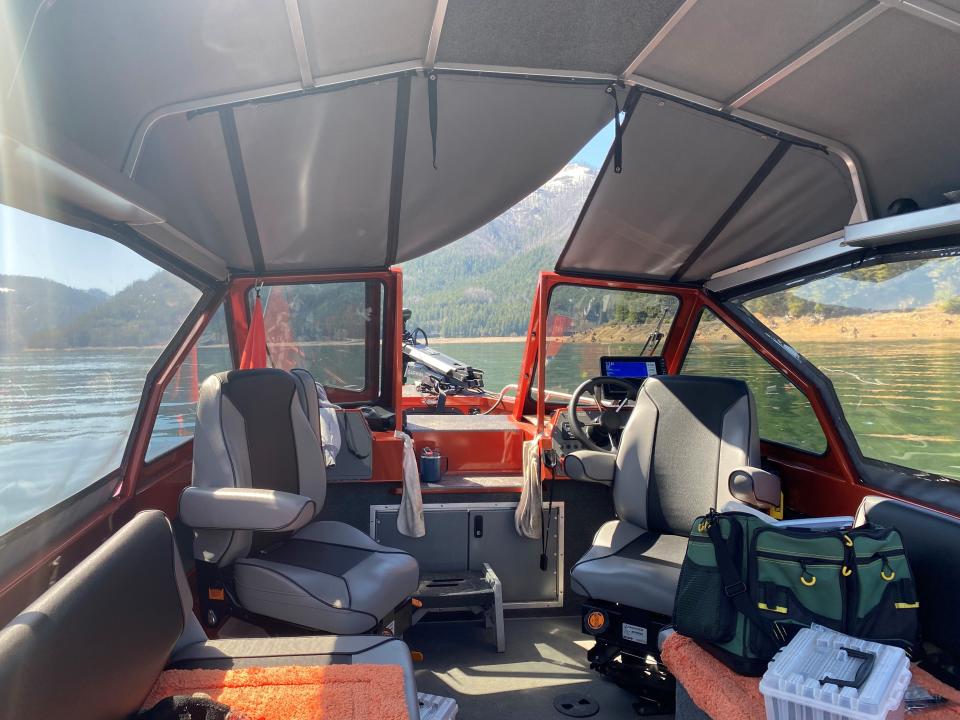
Kokanee lures include hoochies, jigs and small spoons, which are usually scented and neon-colored to enhance presentation.
Like other kinds of salmon fishing, kokanee is extremely technical, and the most successful anglers often have all the necessary tools and equipment. Halleck’s boat is equipped with four downriggers, two motors, a Garmin and a sonar fish finder.
“It’s key to have good electronics and electric trolling motor, especially if you can it use to electronically anchor above the school,” Halleck said.

A fine dining fish
Kokanee are a blast to catch, but they might be even better table fare.
Despite the species’ smaller size, the meat and flavor of this landlocked salmon stack up with the best. There are numerous ways to prepare this delicate, flakey and delicious fish, and everyone’s got their preference.

Halleck likes his coated in panko breadcrumbs with a side of sweet chili sauce. Others like to grill it with Old Bay, bake it Mediterranean style with lemon and garlic, or smoke it for some lox.
After a day on the water in Halleck’s boat, I couldn’t wait to bust out my all-time favorite camp cooking recipe for salmon and trout. It requires no pan, no grill and no oven: only a nice, hot campfire and a couple sheets of aluminum foil.
I placed the kokanee in a sheet of foil with red pepper flakes, oregano, lemon pepper seasoning, salt, garlic and onion powder, with a generous helping of butter and a dash of olive oil. After creating a foil tent over the top of the filets, I threw the bundle skin-side down directly on campfire embers.
After 10-15 minutes, the sizzling salmon skin comes to a crisp, indicating your fish is ready to eat.
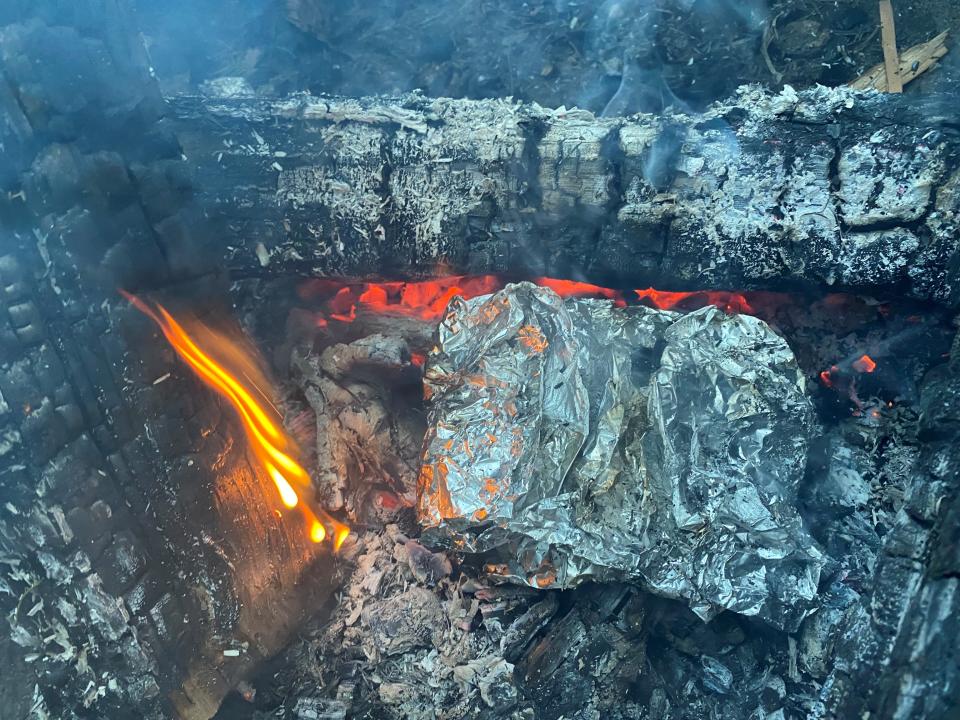
If you’re unsure, you can check if your fish is done by putting the tip of a fork or knife into the filet and gently twist. If it flakes, it’s ready to go. If the meat holds firm, it needs more time. You’ll also see streaks of white on cooked salmon, as the layer of fat between the skin and filet bubble up through the meat when done.
I chose to have the kokanee over some rice, which I sprinkled with a dash of sriracha salt and lemon pepper, but feel free to be more creative. Pilaf, potatoes or couscous would all work, but since I had only one pot and a Jetboil with me, I kept it simple with the rice.
If you get the opportunity to kokanee fish, take it. Time it right with the correct gear and you’ll enjoy consistent action, nice weather, and perhaps most importantly, a delicious meal to celebrate a productive day on the water.
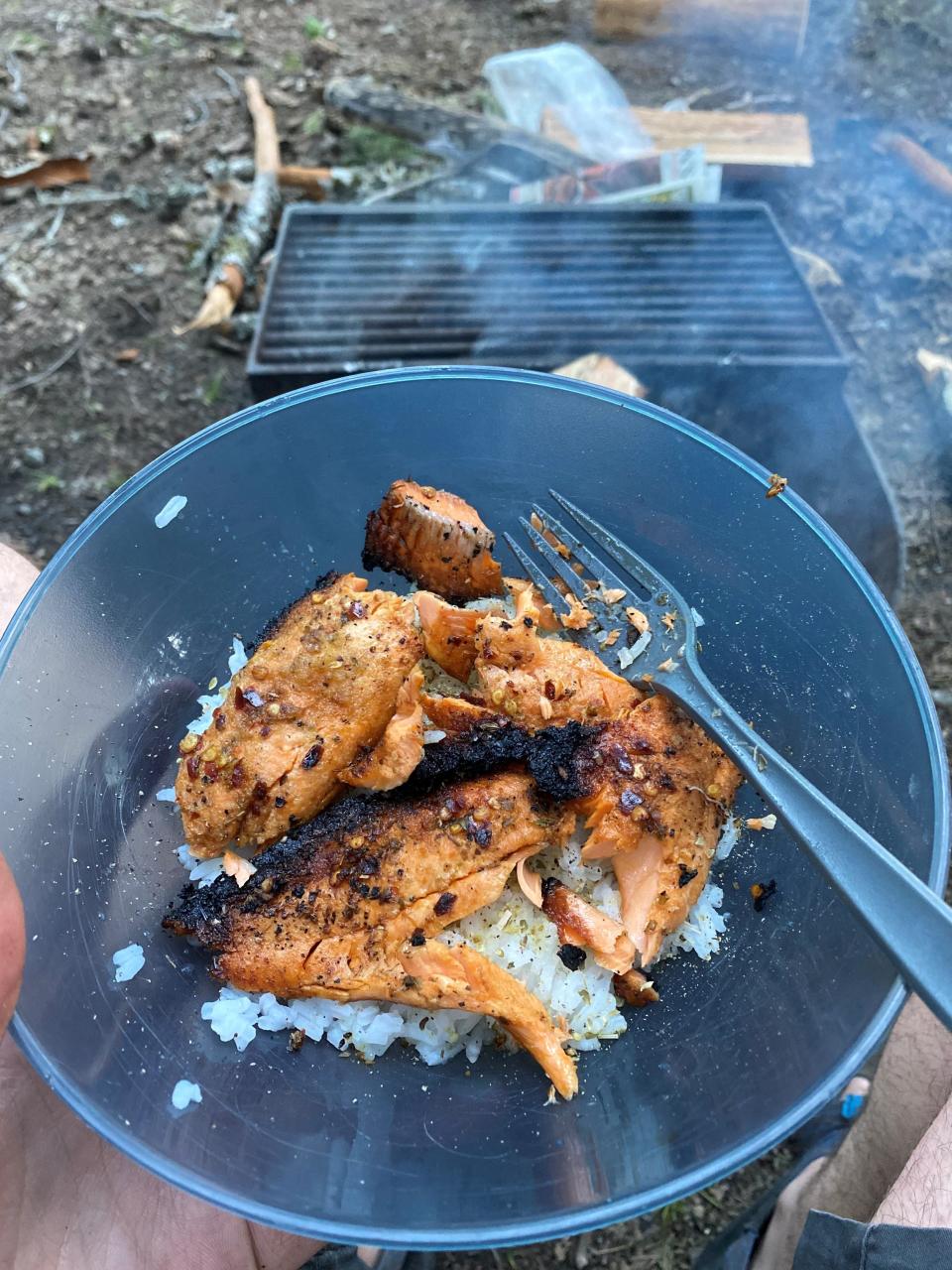
Charles Gearing is an outdoors journalism intern for the Statesman Journal. He can be reached at cgearing@gannett.com.
This article originally appeared on Salem Statesman Journal: Oregon fishing: Anglers hit Detroit Lake for kokanee salmon

